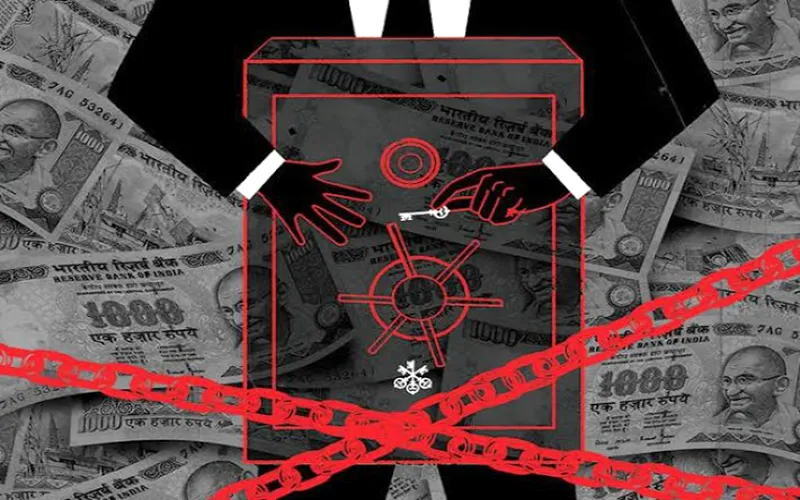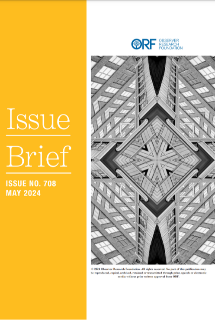Prime Minister Narendra Modi has no doubt hit the global sweet spot by identifying the corrosive potential of black money to slowly eat away the entrails of the painstakingly architected world economic and political system. In many ways it has already left its acidic burn marks in several arenas, ranging from the sudden resurgence of transnational drug cartels dealing with ultra high-end chemical cocktails to international terrorism spearheaded by the likes of ISIS, and closer home by Hafiz Saeed and his various offshoot units. Black money is a strange animal. For one it really doesn't have any colour. That is a minor aside. What makes it really complicated is the multiple forms that it takes, and manner in which it ingratiates itself in both the formal and informal sectors of the world economy. Any tranche of money or parts of it that cannot be fully traced by the institutional frameworks can possibly be defined as black money. In short any money that cannot be accounted for by the national and/or multilateral formal financial systems can possibly be defined as black money. Like most things in life, black money has two sides to it. There's a demand side and a supply side. Modi is primarily referring to the demand side, essentially asking countries to either stop their nudge-and-wink policy towards so-called tax and banking havens or being one. He's the right, and his solution of bringing in greater financial transparency in multilateral transactions and global trade through a digitally networked system of monitoring and evaluation is something that has been advocated for some time by think tanks, scholars and multilateral institutions like Organisation of Economic Cooperation and Development (OECD). Modi's got the big picture right in pointing towards the direction of digitalising all forms of money so that transactions are electronically recorded.
In the way Modi is looking at black money, however, there is the supply side problem that's not acknowledged or addressed. Modi's digital solution, while the right step forward, cannot work if the supply side dynamics of the black market economy, or for that matter informal economy, is not taken into consideration. To explain it through an analogy, Modi's demand side solution is like providing a high definition digital television even when the cabling system and the signals are still delivering analogue signals. The real challenge for Team Modi is to seriously start looking at digital financial solutions along with an overhaul of the administrative, tax and monetary systems to decisively take care of the supply side dynamics. One of the main breeding grounds for an informal economy and a parallel system of money transfer and commercial transaction is the cesspool created by the poor and inconsistent quality of the governance framework. There are multiple strands to this complex cesspool. It has the capacity to generate finances in a self sustaining manner required to nurture it. Additionally, it also has the ability to lead transactions that start in the formal monetary sector, tracked and above board, into a nebulous world where it turns untraceable and by default unaccountable. This is where Modi and his team will have to make a distinction between 'big' black money and 'small' black money. Modi's international push, for instance, is mainly targeted at big black money.
For sake of understanding and convenience, big black money can be defined as massive chunks of money ranging in crores that have been stashed away in hidden offshore accounts or in informal financial systems and instruments, popularly known as the hawala trade in India. Such chunks are usually the result of kickbacks and payouts, or worse the product of siphoning off of the government coffers. In short big black money is the product of big corruption. Both, ironically, are far better organised than the entire formal national and multilateral financial system. They have to be in order to circumvent the rules, regulations and enforcement mechanisms of the formal system. And both are an indication of the hollowness of the governance structure that has allowed the evolution of a parallel 'formalised' structure for the easy transfer, transport and a transaction system for big black money. Then there is small black money. Again, for the sake of convenience and understanding, small black money can be defined as amounts as tiny as Rs50 that can get exchanged between people in an informal and untraceable manner. By itself, it is often seen as an issue not worthy of concerted policy attention, but in conjunction with other such small amounts the network effect of small black money is far more corrosive than big black money. Let's take an example, a use case as the management consultants would call it. Say you are taxing paying employee of a leading software firm in India. Every single paisa of your salary is completely above board; your taxes and provident fund contributions are deducted at source, and you invest certain part of your savings in completely above board tax friendly instruments. Let's assume for a moment that your driving license is up for renewal. Finding the entire process of getting it done cumbersome you approach an agent and give him Rs2000. Of course, there is no receipt. The agent gives an officer Rs1000 at the local RTO and you get your license. Now, that Rs2000, which started its journey to you as accounted cash has been suddenly converted into unaccounted money. The financial system of checks and balances has lost track of it at this point in time. The agent and officer can either pump it back into the formal system -- buying a shirt for Rs1000 from a retail store -- or keep it in some locker or under the mattress for some other purpose. Usually it's a mix of both, with Rs500 say going towards grocery shopping in a retail store, and rest being stashed away. In short only 50% of the original value gets back into the formal financial system. Now, imagine this daily reality for 300 million middle class Indians. Now, reimagine it for 1.2 billion Indians. Small black money is actually several times larger than the big black money. It impacts the daily quality of life or governance as people understand it. Modi needs to focus on tackling small black money if he is serious about substantially constricting the life-flow to big black money. To revisit the TV analogy, small black money is like the cabling system carrying analogue signals. So what's the solution? There are three concerted steps that Modi and team need to start taking on a war-footing. Two of these steps are completely in the nature of digital technology solutions, and one is in the form of creating an enabling policy, administrative and tax environment for the first two steps to have their necessary impact.
The first step is to start creating an integrated system of financial monitoring, transaction and delivery so that every single paisa is tracked. There are efforts to bring in more people into the formal financial system - the Jan Dhan Yojana is one such scheme. The ultimate aim, however, should be to integrate all governance, corporate and transaction services into one single digital card. There are, of course, privacy concerns, but in my mind stopping the corrosion of daily life far outweighs any other concern. The ideal aim, sort of a vision, should be to completely eliminate paper money from our daily lives. The technology, platforms, algorithms, hardware, delivery systems are all available. Nothing, actually, is in the concept or even the prototype stage. There are proven use cases and solutions available, all of course existing in isolation. If Modi and his team are serious about implementing his pre-poll promise of 'more governance and less government', this massive technology push has to be made. One need not look far to understand how the Passport Sewa Kendras (PSKs) have practically made agents and sundry officials powerless, and moneyless.
The second step is to remove physical interfaces as much as possible in day-to-day administrative and corporate systems. Today, electronic and digital governance solutions are being implemented in a manner in which only certain portions of the work flow are digitalised. Let's take Aadhaar card as an example. While capturing of the biometric and physical data is completely digital and so is the issuing of the card, the last mile delivery to the recipient is through India Post. This is where the majority of problems come in, in terms of non-delivery and cases of postmen asking for money. Digital governance solutions have to essentially convert every single part of the work flow into one self-sustaining loop, where the customer/recipient has the option to demand for a physical interface only in the rare care of the loop breaking. Moreover, electronic governance solutions are still not integrating monetary systems and financial transactions, say the payment of fees for several civic services, into the overall digital governance framework.
The third step is to immediately weed out unwanted and unnecessarily policy frameworks, rules and regulations. Such a clean-up is required in order to change the mindset of the bureaucratic framework from one of leverage and power to that of service delivery. To explain this case, take the so-called Tax Deducted at Source (TDS) certificates and tax returns. Not only are you expected to file taxes, which is completely legitimate and justified and which the government should be tracking completely, you are also supposed to send a certificate to the government that you are paying your taxes, a sort of sworn affidavit (another one of those mindless exercises), but also additionally give the government the computation that you have made in calculating the taxes due to the government. In short, both these administrative tools essentially make you or your organisation an unpaid book keeper for the government. It's a symptom of a larger mindset that treats people, businesses and organisations as subjects who need to be eternally grateful to the powers that be. Such a mindset is visible in every single governance or civic service supposedly to be provided by the government. Digital solutions will not work if the untamed jungle of policy, administrative, tax and governance framework is not weeded out thoroughly.
Modi and his team have got their sights on the big chunks of money stashed away in offshore accounts, financial instruments and properties. It's worthy cause. Yet their commitment towards fundamentally eliminating black money will always be treated with doubt unless they move quickly and decisively in rolling out digital solutions that eliminate physical governance interfaces and put a lid on small corruption and small black money and make our lives livable.
(Dr. Swaminathan is Visiting Fellow at Observer Research Foundation and a Fellow at National Internet Exchange of India)
Courtesy: Governance Now
The views expressed above belong to the author(s). ORF research and analyses now available on Telegram! Click here to access our curated content — blogs, longforms and interviews.




 PREV
PREV

